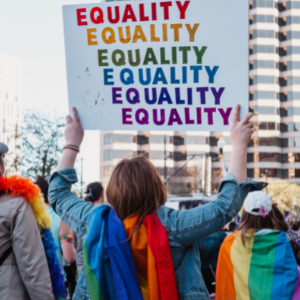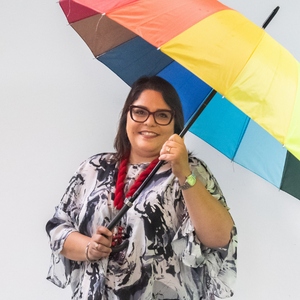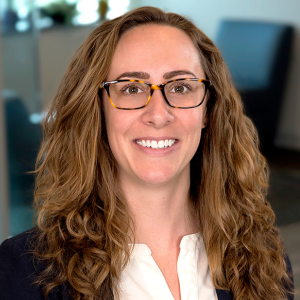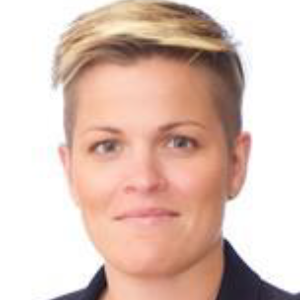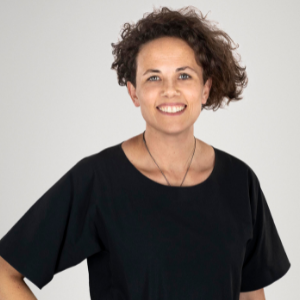5 Ways To Become a Better LGBTQ+ Ally
 Being an LGBTQ+ ally is being an advocate for, and active participant in, building cultural inclusion.
Being an LGBTQ+ ally is being an advocate for, and active participant in, building cultural inclusion.
According to Fast Company, “Allyship refers to everyday acts which challenge behavioral norms and support members of marginalized groups through an awareness of the issues being faced by others.”
A team of professors in Harvard Business Review view “allyship” as: “a strategic mechanism used by individuals to become collaborators, accomplices, and coconspirators who fight injustice and promote equity in the workplace through supportive personal relationships and public acts of sponsorship and advocacy. Allies endeavor to drive systemic improvements to workplace policies, practices, and culture.”
Here are five ways to be an accomplice in creating cultural inclusion:
1. Cultivate Awareness and Empathy.
A lot of advice for being a better ally focuses on self-education. But what is the objective of that? Cultivating awareness and empathy.
A prerequisite of support is cultivating awareness of realities and painful disadvantages that you do not have direct experience of: becoming aware of the bias and discrimination and understanding why it causes harm. The absence of having to experience that reality is what we call ‘privilege’.
Allyship requires a willingness to open your eyes and place yourself in another’s shoes as they tell you how that experience exists for them through their eyes.
In their March 2020 survey of 2,000 LGBTQ+ employees and 2,000 straight employees, in partnership with NYC LGBT Community Center, Boston Consulting Group (BCG) found an interesting insight.
Natural allyship is on the rise, because the separation between young LGBTQ people and their straight peers is more narrow. Compared to their older counterparts, straight employees under 35 are 1.6 times more likely to know LGBTQ colleagues, 3.6 times more likely to join ally programs and 3 times more likely to find value in colleagues being ‘out’.
The younger the employee group, the greater the awareness of discrimination. For example, only one-fourth of straight 55-64 year olds witnessed any discrimination in the past year, compared to 57% of their LGBTQ+ peers. But 85% of straight 18-24 year olds witnessed it, much closer to the 91% of LGBTQ+ who also did.
That change reflects a much smaller gap and increased sensitivity in the ability to see certain behaviors as harmful to certain groups, even if you do not belong to the group.
By expanding your exposure to the stories of others, whether through personal connection, documentaries, books or following LGBTQ+ leaders and media, you increase your awareness of the nuances of discrimination and build empathy. Start here: Are you aware of the common microaggressions that LGBTQ+ people experience?
2. Recognize Identity As Personally Defined and Fluid.
As theglasshammer covered recently, social identity is increasingly becoming more personal, intersectional, fluid and multiple. But more than anything, identity is increasingly self-identified. The myriad range of LGBTQ+ experiences are far from universal.
It’s important to realize that language matters, and not make assumptions about the identity or orientation of another person or about what that belonging means for them.
By allowing others to tell you about themselves through their voice, rather than make assumptions, you remain curious and allow others to find their authenticity. An inside-out connection that begins with the internal connection with self, and interacting with others and the world from the space of that inner truthfulness, is the basis of authenticity.
Being conscious of your own language helps to avoid making assumptions, such as using gender-neutral terms like ‘partner’. Honoring a person’s self-identity includes observing the personal pronouns that people choose for themselves and normalizing that choice.
Certain short-cut assumptions are well-conditioned in our brains, so it takes effort to not make those automatic leaps. But when it comes to another person’s life, it’s far more connective to show up by listening to them before you assert assumptions about who they are.
3. Embrace The Growth in Discomfort.
“Allyship is not knowing it all and never making mistakes. That’s impossible,” writes Freddy McConnell, host of Pride & Joy BBC podcast. “It’s putting in the effort and not expecting trophies.”
Allyship requires vulnerability, because you’re going to be clumsy at times. As McConnell writes: “When my friend came out to me as nonbinary, I practised their pronouns in private. Being trans does not imbue me with a special gift for unlearning familiar speech patterns.”
It’s not about getting it right or wrong, but about being open to learning. Before we challenge any unconscious bias, stereotypes or assumptions in the culture around us, we often foremost come to confront the existence of them within ourselves, even as part of the LGBTQ+ community.
Often the roots of rejection (of others and self-rejection) are shame-based beliefs and conditioning. Evolving involves unlearning that cultural conditioning, including the habit to shame ourselves if we get it wrong.
A willingness to be wrong, admit when you’re wrong, own your mistake and be receptive to guidance is what is valuable to a growth mindset and to keeping the focus on your intention of better allyship.
“Allyship is actually more about the mistakes than the things that you do right,” says human rights advocate Maybe Burke, who conducts allyship training on behalf of the Transgender Training Institute. “It’s about how you deal with those mistakes and move forward.”
4. Treat Ally as a Verb.
As suggested in a University College London (UCL) blog: “Think of ‘ally’ as an action rather than a label.” Being an ally is not about whether you consider yourself as an ally, but how you show up in support consistently.
In their research, BCG found that only 34% of straight employees always intervene when they see an encounter. As written in HBR: “When you witness discrimination, don’t approach the victim later to offer sympathy. Give him or her your support in the moment.”
Remaining silent is a comfortable form of passive collusion—it assures that heteronormative assumptions and microaggressions remain invisible, insidious and unchallenged within the fabric of an organizational culture, and puts the emotional burden on LGBTQ+ people to be the only ones calling out these behaviors. It also makes it more vulnerable for them to do so.
Are you willing to speak up when you hear something that feels wrong or discriminatory or does not sit well, inside of your heart? And will you be that voice in the room, even when the LGBTQ+ person may not be in it? Are you being an ally (verbing it) in the moment it’s called for?
5. Uplift LGBTQ+ Voices.
Ultimately, allyship embraces an interdependent lens: a culture is not really working for anybody if it’s not welcoming and nutritive for everybody. An organizational culture needs to be a win-win for all employees on all levels to be maximally effective.
That’s why performative allyship is dangerous—it comes from a place of ego protection, does not integrate win-win and keeps the focus on the appearance of allyship (the guise of doing good) rather than fundamentally being aligned to real organizational change for everyone’s good.
Performative allyship fears losing its position or does not really embrace the point.
Speaking up as an ally is not about speaking over, but raising everyone’s voice. Be willing to ask how you can support your LGBTQ+ colleagues in the way that is most meaningful for them.
While your voice will be needed as an ally, your success will be evidenced in the greater space for marginalized LGBTQ+ voices at the center, not the edges, of the organizational conversation—down to the small and casual daily interactions that form relationships and culture.
(If you are a leader who wants to develop your skills as an inclusive leader to leverage diversity and truly understand the topic as a strategic capability, work with Nicki Gilmour on this topic as she coaches male and female leaders and managers who are growing their skills and evolving their behaviors to lead the current and future top talent of their firms. For an exploratory call, please book a session here.)
By Aimee Hansen

